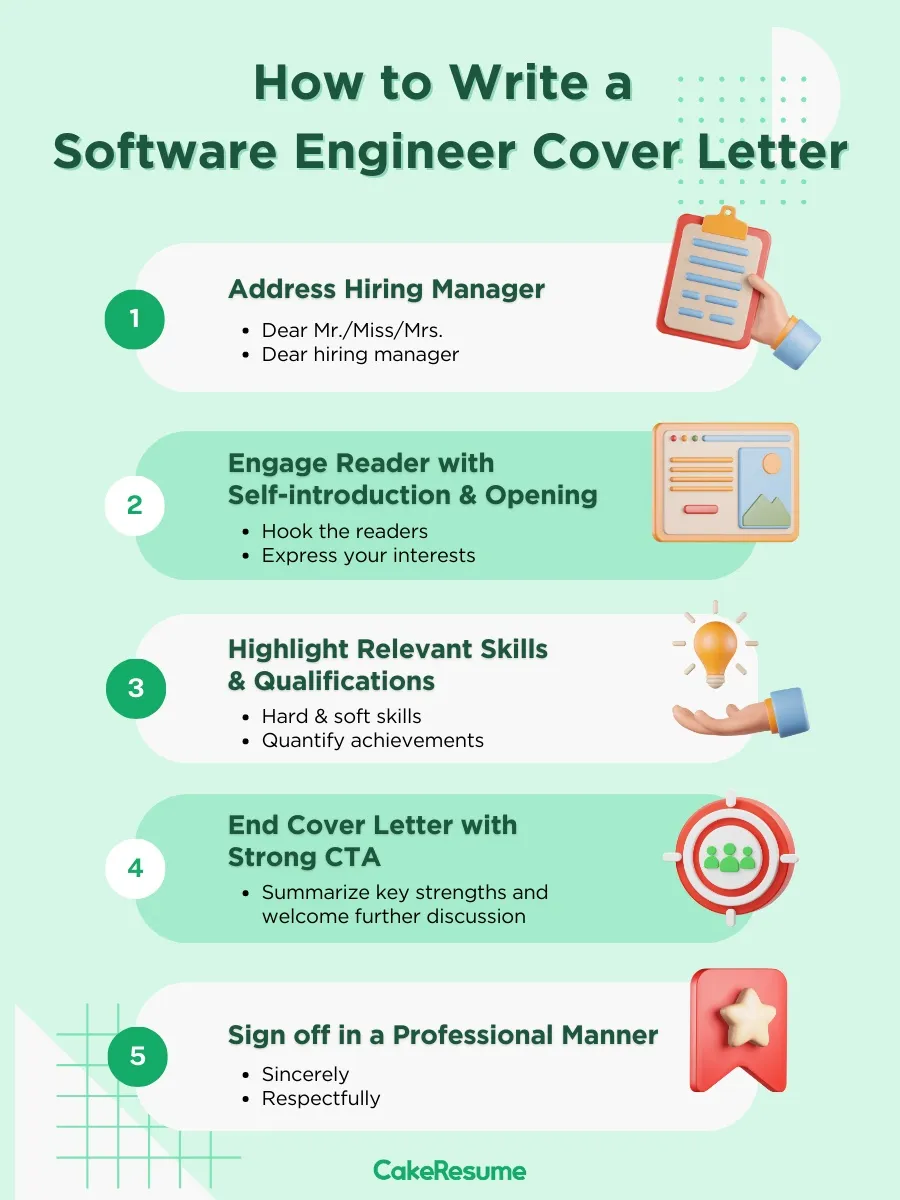Understanding the Importance of a Software Engineer Cover Letter
In the competitive field of software engineering, a well-crafted cover letter is more than just an optional extra; it’s a critical tool that can significantly increase your chances of landing an interview. While your resume provides a snapshot of your skills and experience, a cover letter gives you the opportunity to tell a compelling story, connecting your qualifications to the specific needs of the employer. It allows you to demonstrate your passion for software development, showcase your unique personality, and explain why you’re the perfect fit for the role. Without a strong cover letter, your application might get lost in the stack, overlooked by recruiters who are looking for candidates who go the extra mile.
Why a Cover Letter Matters for Software Engineers
A cover letter serves multiple crucial functions for software engineers. Firstly, it allows you to provide context to your resume. Not all experiences are created equal, and a cover letter lets you elaborate on projects, explain the impact of your contributions, and highlight the specific technologies you’ve mastered. Secondly, it enables you to address any potential gaps or weaknesses in your application. For example, if you’re transitioning to a new technology or have limited experience in a particular area, you can use the cover letter to explain your eagerness to learn and your relevant transferable skills. Finally, it demonstrates your communication skills – a crucial asset in collaborative software development environments. A well-written cover letter showcases your ability to articulate your thoughts clearly, persuasively, and concisely.
Highlighting Your Technical Skills
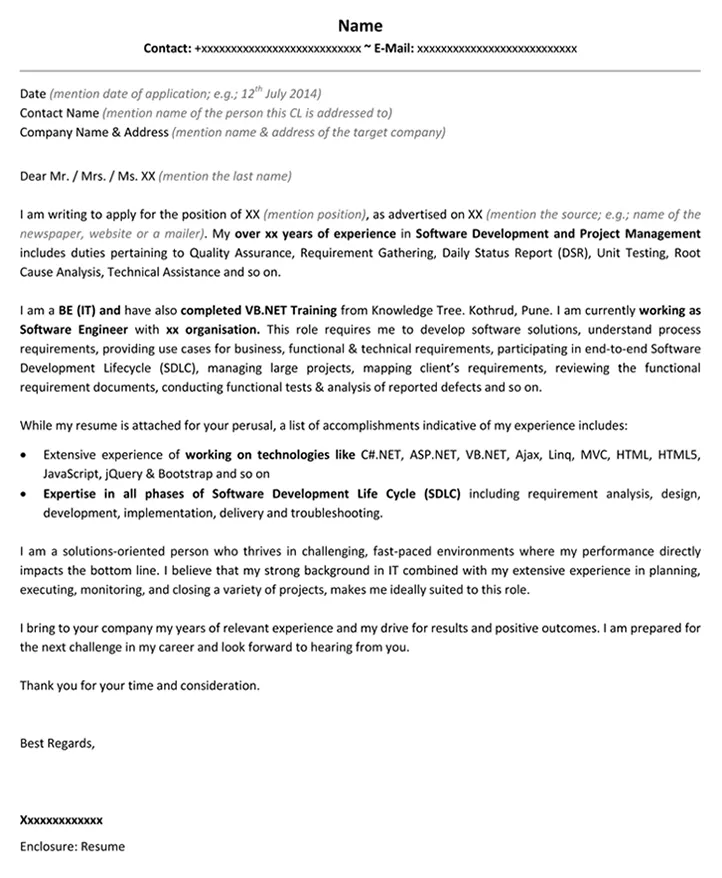
Your cover letter is the perfect place to showcase your technical prowess. Don’t just list the technologies you know; demonstrate how you’ve used them to solve real-world problems. For example, instead of simply stating “Proficient in Java,” you could write “Leveraged Java to develop a scalable microservice architecture, resulting in a 30% reduction in server latency.” Be specific and provide concrete examples. Mention the projects you’ve worked on, the challenges you overcame, and the positive outcomes of your work. This helps the hiring manager understand the value you can bring to their team. Always tailor your technical skills to match the job description. Prioritize the skills and technologies that the employer is seeking and emphasize your relevant experience.
Structuring Your Software Engineer Cover Letter
A well-structured cover letter is easy to read and immediately conveys your key qualifications. Following a clear and logical structure ensures that you present your information effectively. The typical structure includes a header, a greeting, an introduction, body paragraphs, a closing, and a call to action. Each section should serve a specific purpose, guiding the reader through your qualifications and making a strong case for why you should be considered for the role. Remember to keep it concise and focused; hiring managers often have limited time to review applications.
Header and Contact Information
The header of your cover letter should include your contact information: your full name, phone number, email address, and optionally, your LinkedIn profile URL and your personal website or portfolio. Ensure that your contact information is up-to-date and professional. The header should be consistent with the contact information on your resume. This ensures that the hiring manager can easily reach you. Also, include the date and the recipient’s name and address, if known, to personalize your letter further.
Greeting and Introduction
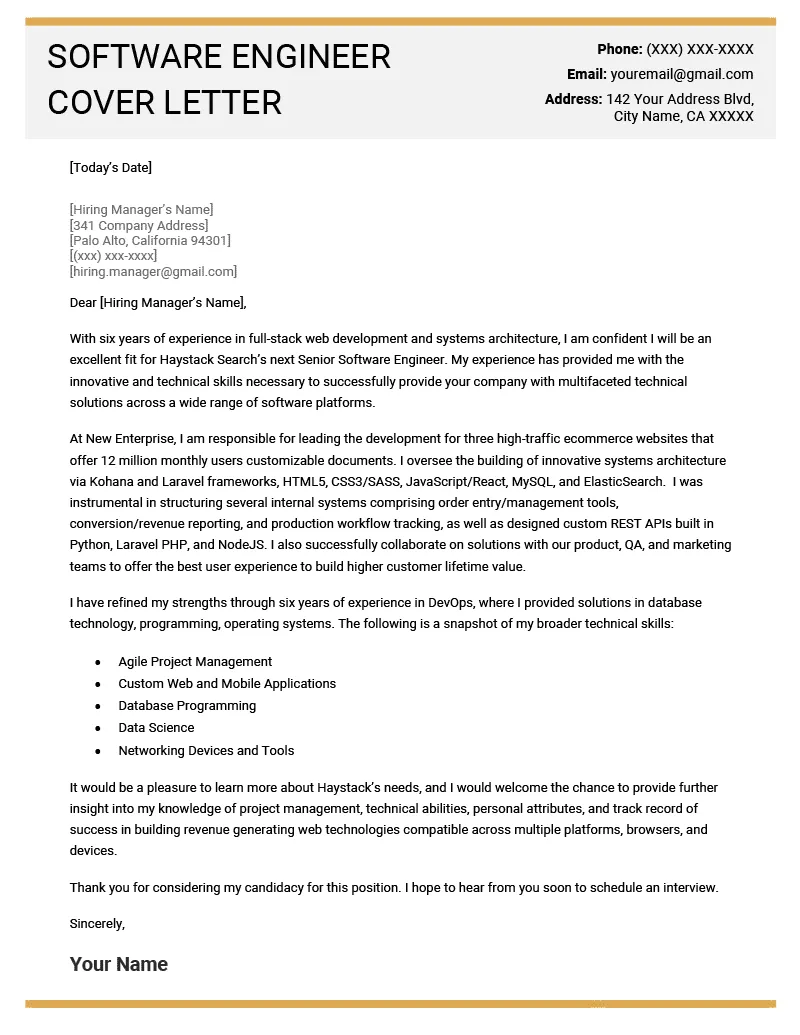
Start your cover letter with a professional greeting, such as “Dear Mr./Ms. [Last Name],” or if you don’t know the hiring manager’s name, “Dear Hiring Manager.” The introduction should grab the reader’s attention immediately. Briefly state the position you’re applying for and where you found the job posting. Then, make a compelling statement about why you’re interested in the company and the role. For example, “I am writing to express my enthusiastic interest in the Software Engineer position at [Company Name], as advertised on [Platform]. I am particularly drawn to [Company Name]’s innovative work in [Specific Area] and believe my skills and experience align perfectly with your requirements.”
Body Paragraph 1 Showcasing Relevant Experience
The body paragraphs are where you showcase your experience and qualifications. In the first body paragraph, highlight your most relevant experience. Focus on the projects, roles, and responsibilities that align most closely with the job description. Provide specific examples of your work, quantifying your achievements whenever possible. For instance, instead of saying “Managed a team,” you could say “Managed a team of five developers, successfully delivering a project on time and under budget.” Tailor this paragraph to address the key requirements mentioned in the job posting.
Body Paragraph 2 Detailing Key Accomplishments
In the second body paragraph, delve deeper into your key accomplishments. This is your opportunity to showcase the impact of your work. Describe specific projects or tasks where you made a significant contribution. Use the STAR method (Situation, Task, Action, Result) to structure your examples. For example, start with the situation, describe the task you were assigned, explain the actions you took, and then highlight the results you achieved. Quantify your accomplishments whenever possible by using metrics such as improved efficiency, reduced costs, or increased user satisfaction. This will demonstrate the value you can bring to the company.
Body Paragraph 3 Emphasizing Skills and Technologies
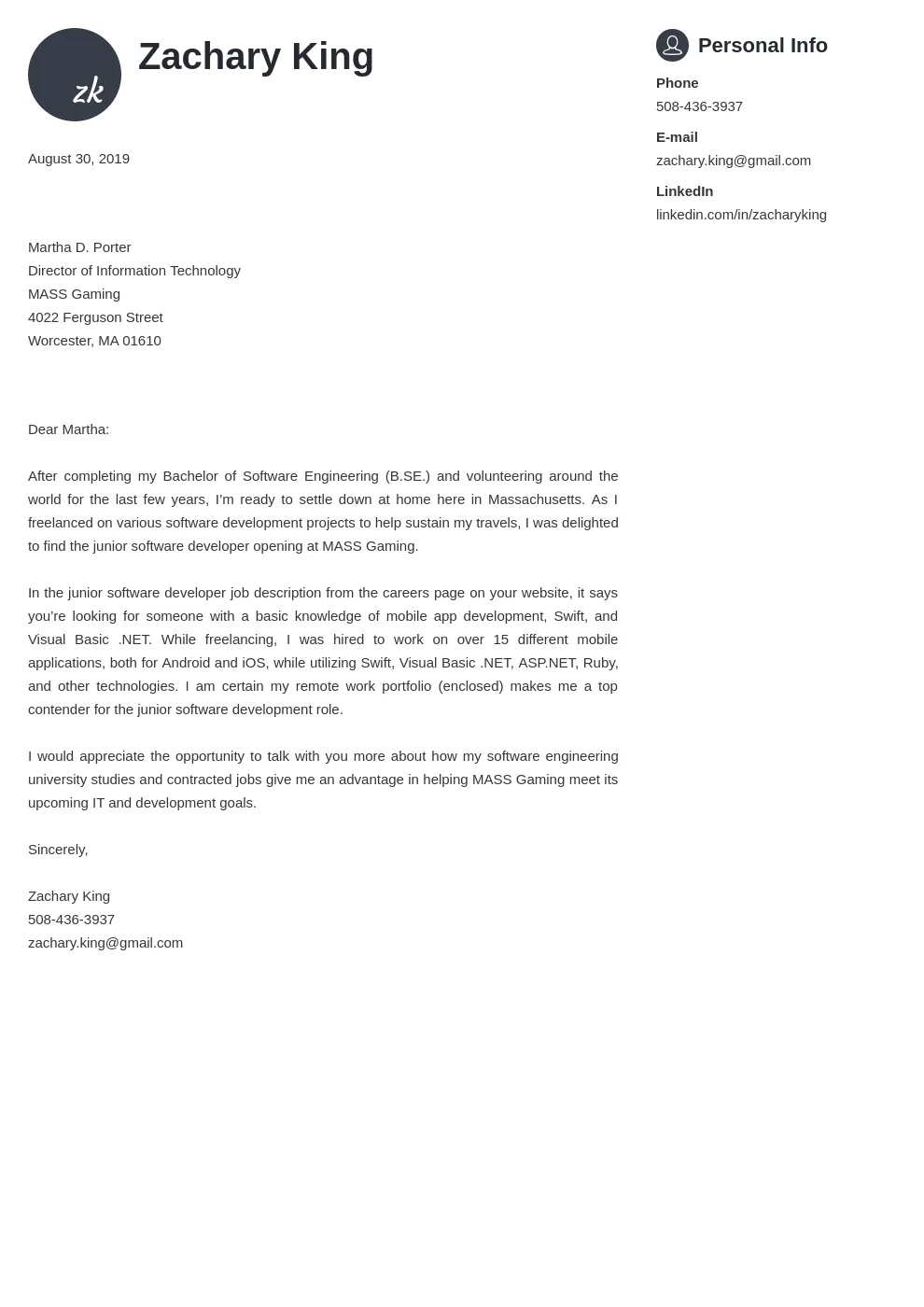
The third body paragraph should focus on the skills and technologies that make you a strong candidate. Go beyond simply listing your skills and explain how you have applied them in practice. Mention the programming languages, tools, frameworks, and methodologies you are proficient in. Relate these skills to the specific requirements outlined in the job description. Provide concise examples of how you’ve used these skills to solve problems and achieve results. Demonstrate your enthusiasm for learning new technologies and your ability to adapt to evolving industry trends. This will highlight your suitability for the role.
Closing and Call to Action
In the closing paragraph, summarize your qualifications and reiterate your interest in the position. Thank the hiring manager for their time and consideration. Include a clear call to action, such as “I am eager to learn more about this opportunity and discuss how I can contribute to [Company Name]’s success.” Also, express your availability for an interview and provide your contact information again. End with a professional closing, such as “Sincerely,” or “Best regards,” followed by your full name.
Key Elements to Include in Your Cover Letter
To make your cover letter stand out, include the following key elements: specific examples of your accomplishments, quantifiable results, tailored skills and keywords from the job description, and a clear call to action. Show your enthusiasm for the company and the role, demonstrating that you’ve done your research. The most impactful cover letters are personalized and show a genuine interest in the opportunity and the company. Use action verbs to describe your responsibilities and accomplishments.
Highlighting Projects and Contributions

When detailing your projects and contributions, be specific and provide context. Describe the project’s goals, your role in the project, the technologies you used, and the results you achieved. Instead of saying “Worked on a website,” say “Developed the front-end of a responsive website using React, resulting in a 20% increase in user engagement.” If possible, include links to your portfolio or GitHub profile where the hiring manager can see your work. Be sure to emphasize your individual contributions, especially in team projects. Explain how you helped solve problems, meet deadlines, and improve the overall quality of the project.
Quantifying Achievements and Results
Quantifying your achievements is crucial for demonstrating your impact. Use numbers and metrics to illustrate the results of your work. For example, instead of “Improved website performance,” say “Improved website loading speed by 30% by optimizing database queries.” Consider using metrics such as percentage increases or decreases, cost savings, time savings, or user satisfaction scores. This demonstrates your ability to create tangible value for the company. Quantifiable results make your accomplishments more concrete and convincing.
Tailoring Your Cover Letter to Each Application
Never use a generic cover letter for multiple applications. Tailoring your cover letter to each job is essential. Carefully review the job description and identify the key requirements, skills, and keywords. Use these keywords throughout your cover letter to demonstrate that you meet the employer’s needs. Research the company to understand its mission, values, and current projects. This will help you tailor your cover letter to align with the company’s culture and goals. Personalized cover letters show the hiring manager that you are genuinely interested in the specific role and the company.
Common Mistakes to Avoid
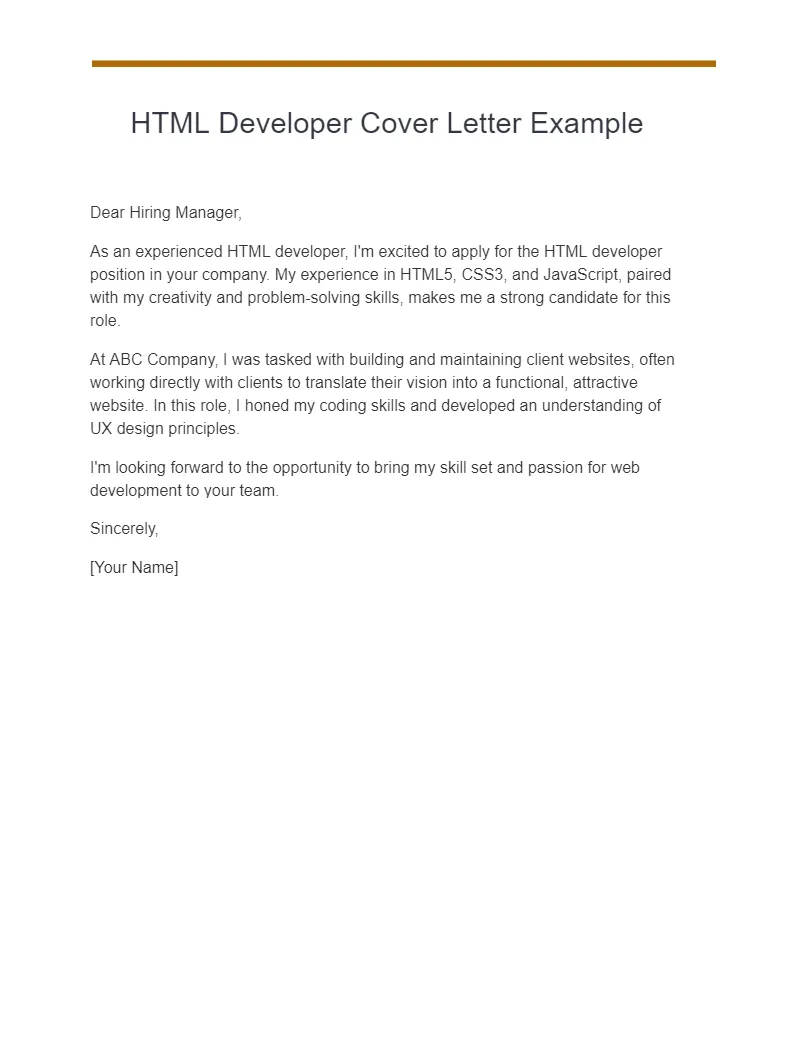
Avoiding common mistakes is crucial for making a positive impression. Ensure that your cover letter is free of errors and tailored to each application. Proofread your cover letter carefully before submitting it.
Generic Cover Letters
One of the biggest mistakes is using a generic cover letter. Generic cover letters lack personalization and often fail to address the specific requirements of the job. Employers can easily identify generic cover letters and will likely dismiss your application. Always tailor your cover letter to the specific role and company. Show that you have researched the company and understand their needs. This demonstrates your genuine interest in the opportunity.
Typos and Grammatical Errors
Typos and grammatical errors can immediately disqualify your application. Errors indicate a lack of attention to detail and can make you appear unprofessional. Proofread your cover letter carefully for any typos, grammatical errors, and punctuation mistakes. Use a spell checker and grammar checker to help catch errors. Consider having a friend or family member review your cover letter as a second pair of eyes. A polished cover letter is a sign of professionalism.
Ignoring the Job Description
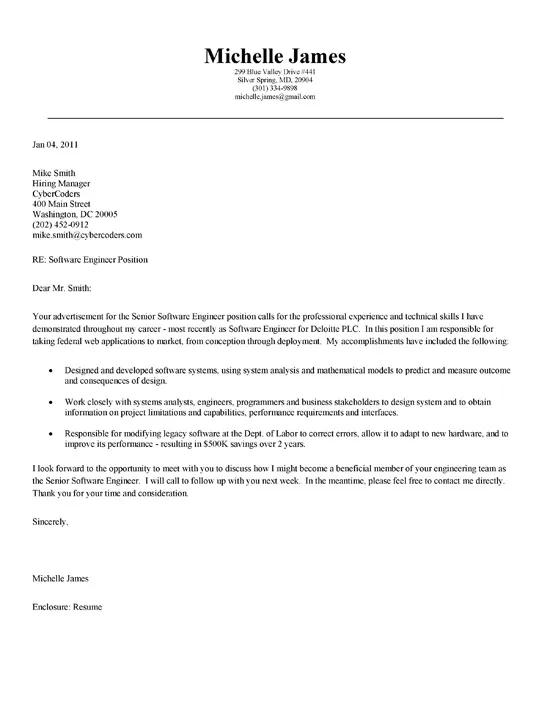
Ignoring the job description is another common mistake. The job description provides essential information about the role and the qualifications the employer is seeking. If your cover letter does not address the key requirements mentioned in the job description, it will likely be overlooked. Carefully read the job description and identify the essential skills and experience the employer is looking for. Tailor your cover letter to match the requirements, emphasizing your relevant skills and experience. Demonstrating that you meet the requirements will greatly increase your chances of getting an interview.
Cover Letter Examples for Software Engineers
Reviewing examples of successful cover letters can provide valuable insights. Look for examples that match your experience level and the type of role you are applying for. Consider different formats and styles to find what best suits your background. While you should not copy a template, use it as inspiration to write your own unique cover letter.
Example 1 Entry-Level Software Engineer
This example emphasizes the candidate’s education, any internships, and personal projects that demonstrate their software development skills. It highlights their eagerness to learn and their ability to quickly adapt to new technologies. The focus is on showing potential and demonstrating relevant skills and knowledge. A recent graduate should emphasize their coursework, any relevant personal projects (like a GitHub portfolio), and the skills they have acquired.
Example 2 Experienced Software Engineer
This example highlights the candidate’s professional experience, focusing on their accomplishments and contributions in previous roles. It showcases their proficiency in specific technologies, their project management skills, and their ability to work effectively in a team. The focus is on demonstrating tangible results and their value in previous roles. An experienced software engineer should focus on the projects that highlight their expertise, their accomplishments, and measurable results.
Example 3 Software Engineer with a Specific Skill Set
This example tailors the cover letter to a specific technology or skill set, such as expertise in cloud computing, artificial intelligence, or cybersecurity. It highlights projects where the candidate utilized their specialized skills and achieved significant results. The focus is on demonstrating expertise in a niche area and how they can contribute to the company’s specific projects or initiatives. Highlight any projects where you employed the specified skill and any certifications related to that skill.
